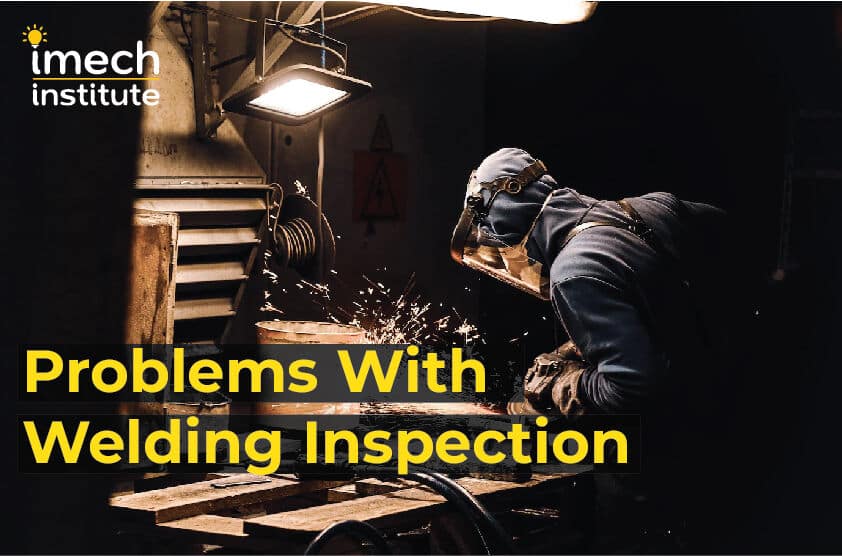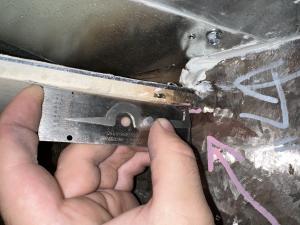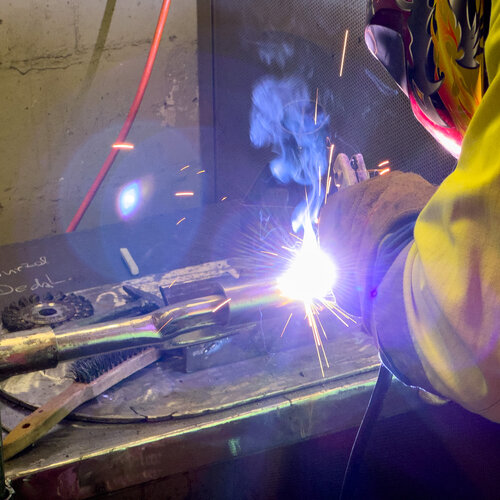Comprehending the Process of Welding Inspection Racine for Ideal Results
Wiki Article
Innovative Methods to Fillet Weld Evaluation and Testing: Enhancing Weld High Quality and Compliance Specifications
In the world of welding, the top quality and honesty of fillet welds play a crucial role in ensuring the structural soundness and reliability of different commercial components. With the consistent drive for improved performance and conformity with rigid standards, the exploration of ingenious methods to fillet weld examination and screening has actually ended up being essential. As markets progress, the typical techniques may no more be sufficient in satisfying the demands of modern-day welding applications. By accepting sophisticated innovations and techniques, a new horizon of possibilities arises in the realm of weld high quality evaluation and adherence to conformity standards.Advanced Non-Destructive Testing Methods
Utilizing state-of-the-art modern technologies, advanced non-destructive testing approaches play an essential role in ensuring the honesty and high quality of fillet welds. These techniques, such as phased variety ultrasonic screening (PAUT) and magnetic bit screening (MPT), offer thorough insights right into the weld's internal structure without causing any damage to the material. PAUT, for example, uses several ultrasonic components to examine the weld from different angles, offering a comprehensive visualization of possible issues like lack of combination or splits.By using these innovative non-destructive testing strategies, weld inspectors can precisely evaluate the top quality of fillet welds, ensuring compliance with sector criteria and laws. The ability to spot imperfections early on not just enhances weld high quality however also avoids expensive rework or failings in architectural honesty, underscoring the value of these ingenious testing approaches in welding inspections.
Robotics and Automation in Examination
The integration of robotics and automation has changed the examination procedure for fillet welds, improving effectiveness and precision in quality evaluation. Robotics use specific control and repeatability in evaluating welds, ensuring dependable and consistent outcomes. Automated systems can be set to comply with details inspection courses, guaranteeing complete coverage of welds and lowering the danger of human mistake.Robotic assessment systems outfitted with sophisticated sensors can identify and gauge weld functions with high precision, offering comprehensive information for analysis. These systems can identify flaws such as splits, absence of fusion, and porosity, making it possible for punctual corrective actions to be taken. Furthermore, robotics and automation permit for real-time data collection and analysis, giving immediate feedback to operators and facilitating quick decision-making procedures.
Additionally, using robotics and automation in fillet weld inspection boosts general efficiency by decreasing examination times and boosting inspection throughput. By streamlining the assessment process, producers can ensure weld quality and compliance standards are fulfilled efficiently, inevitably bring about cost financial savings and boosted product quality.
Making Use Of Expert System for Analysis
Man-made knowledge plays a critical role in enhancing the performance and precision of evaluation in fillet weld inspection procedures. By harnessing the power of AI, examiners can simplify the analysis of weld quality and compliance requirements, causing more trustworthy and precise results. AI algorithms can rapidly process substantial amounts of information from weld evaluations, identifying defects or inconsistencies that may be testing to understand the nude eye. This sophisticated technology allows real-time tracking of weld top quality, enabling for immediate corrective actions to be taken if any issues are detected.Moreover, AI systems can gain from past evaluation data, constantly enhancing their capacity to identify prospective issues and variances in fillet welds. This flexible discovering ability improves the overall quality assurance process, decreasing the likelihood of human error and guaranteeing that welds satisfy the required standards. By integrating expert system into fillet weld evaluation, sectors can attain higher degrees of effectiveness, uniformity, and conformity pop over here in their assessment methods.
Portable Tools for On-Site Inspection
 Enhancing field assessment performance, the fostering of mobile devices reinvents on-site assessment processes for fillet welds. These tools offer versatility and benefit, allowing inspectors to conduct detailed evaluations in numerous areas, consisting of challenging or remote environments. Mobile devices such as ultrasonic screening tools, magnetic bit assessment tools, and digital radiography systems give real-time information and high-resolution imaging capacities, allowing fast decision-making and immediate responses on weld top quality.
Enhancing field assessment performance, the fostering of mobile devices reinvents on-site assessment processes for fillet welds. These tools offer versatility and benefit, allowing inspectors to conduct detailed evaluations in numerous areas, consisting of challenging or remote environments. Mobile devices such as ultrasonic screening tools, magnetic bit assessment tools, and digital radiography systems give real-time information and high-resolution imaging capacities, allowing fast decision-making and immediate responses on weld top quality.One significant benefit of portable tools is their ability to streamline assessment procedures, minimizing downtime and boosting overall efficiency. Inspectors can easily transfer these devices to various task websites, eliminating the demand for delivering hefty machinery or components to off-site centers. In addition, the transportability of these devices advertises cost-effectiveness by reducing transportation expenditures and accelerating inspection timelines.
In addition, using mobile tools for on-site evaluation promotes aggressive quality assurance procedures, as examiners can immediately determine and deal with any potential welding defects or inconsistencies. By integrating these cutting-edge innovations into on-site evaluation methods, welding experts can ensure compliance with sector criteria and enhance weld high quality, eventually causing improved structural honesty and security in various welding applications.
Combination of Data Monitoring Equipment
Having enhanced on-site assessment procedures through the utilization of portable devices, the next phase includes the smooth assimilation of information management systems to additionally boost efficiency and data evaluation abilities in fillet weld evaluation and testing. Welding Inspection Racine. By integrating information monitoring systems into the examination procedure, companies can streamline data collection, storage, and analysis. This integration you can try these out permits real-time surveillance of weld top quality, immediate identification of problems, and punctual decision-making to correct any type of issues that might arise throughout the evaluation process
The integration of data administration systems enables smooth communication in between various stakeholders involved in the inspection process, fostering collaboration and improving total quality control actions. Eventually, the assimilation of data administration systems offers to raise the criteria of fillet weld inspection and screening, guaranteeing conformity with market guidelines and boosting weld top quality.
Final Thought
In verdict, ingenious strategies to fillet weld evaluation and screening have actually significantly boosted weld top quality and conformity requirements. Advanced non-destructive screening techniques, robotics, automation, expert system, mobile devices, and data management systems have changed the method weld evaluations are carried out. By utilizing these technologies, sectors can guarantee that welds fulfill the needed top quality criteria and regulations, inevitably improving total efficiency and safety and security in welding procedures.
By using these innovative non-destructive testing techniques, weld inspectors can precisely examine the quality of fillet welds, guaranteeing compliance with industry criteria and regulations. Mobile devices such as ultrasonic testing gadgets, magnetic bit examination tools, and electronic radiography systems give real-time information and high-resolution imaging abilities, enabling fast decision-making and immediate feedback on weld top quality.
Having actually enhanced on-site assessment procedures through the application of portable tools, the following phase includes the seamless combination of information monitoring systems to further boost effectiveness and information evaluation abilities in fillet weld evaluation and testing her latest blog (Welding Inspection Racine). Eventually, the combination of data monitoring systems serves to elevate the standards of fillet weld examination and testing, guaranteeing conformity with market policies and boosting weld high quality
 In verdict, ingenious methods to fillet weld inspection and screening have actually considerably enhanced weld top quality and compliance standards.
In verdict, ingenious methods to fillet weld inspection and screening have actually considerably enhanced weld top quality and compliance standards.Report this wiki page